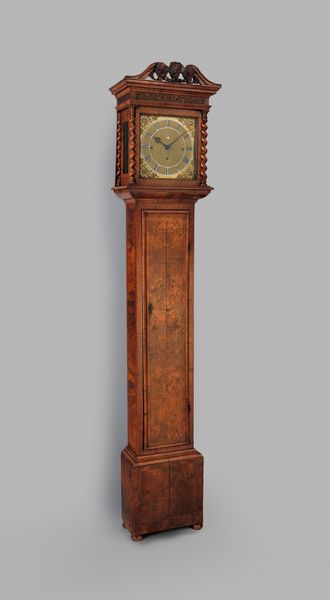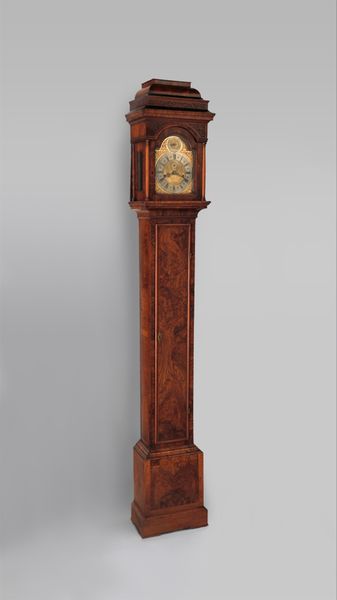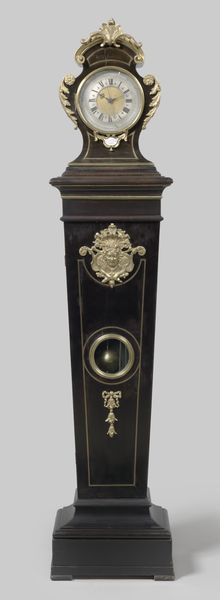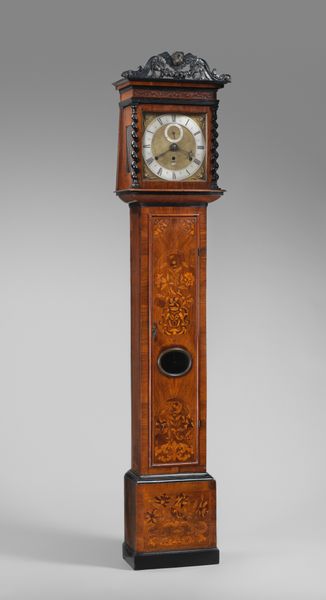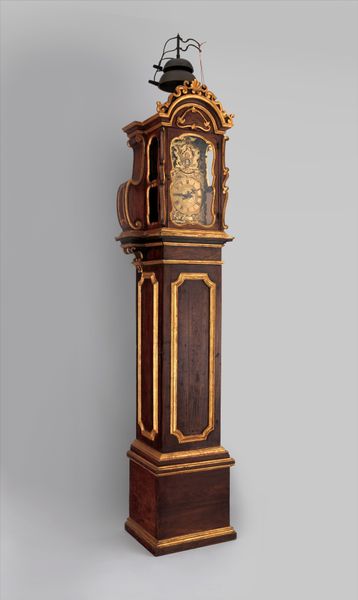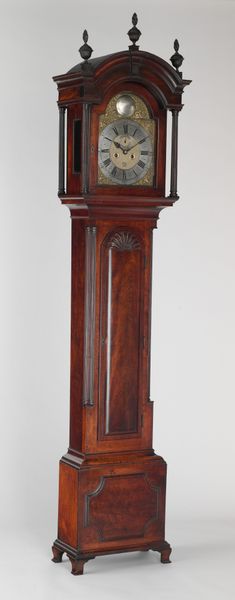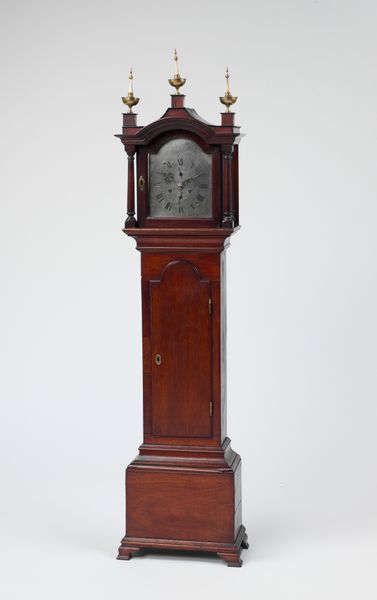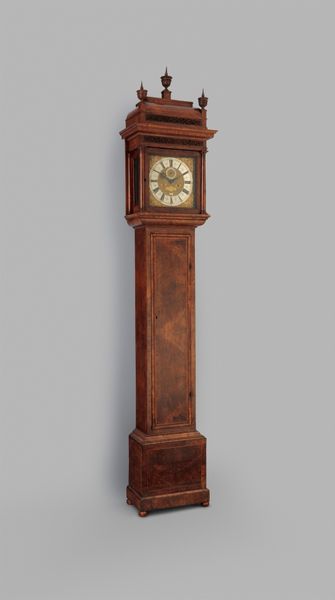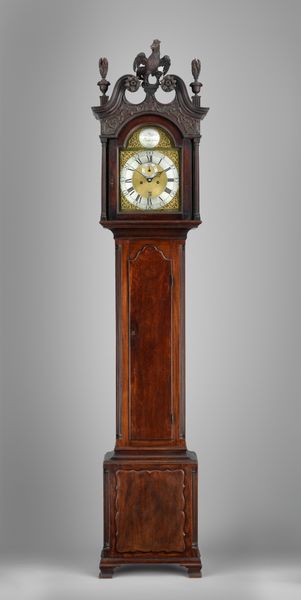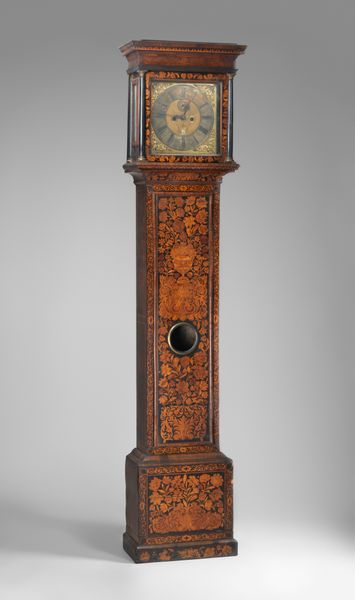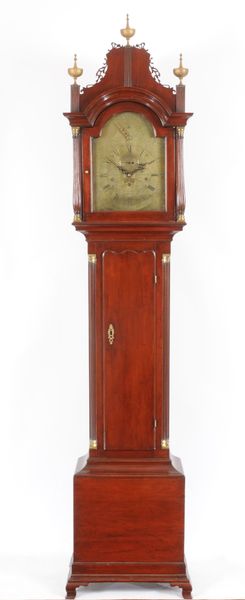
carving, sculpture, wood
#
carving
#
baroque
#
sculpture
#
traditional architecture
#
sculpture
#
wood
#
decorative-art
Copyright: Rijks Museum: Open Domain
Curator: Here we have a standing clock from the 1700s, crafted from wood and carving techniques. The artist is unknown, but its style firmly places it in the Baroque period. Editor: My first thought is the wood grain—that incredible burled texture. It really dominates the form, especially with the clock mechanism missing. Curator: Exactly! Its absence highlights the material and craft, drawing attention to the relationship between form and function. Think about how time was conceived then—order, divinity, but also, inescapably, death. Consider the power dynamics involved; time keeping as privilege and societal regulation. Editor: I'm stuck on the wood itself, that materiality. Where was it sourced? Who did the labor of felling it, shaping it? These clocks weren't just timekeepers for the wealthy; they were products of a vast, often brutal, economic system. What can you tell me about how the object was produced? Curator: We know objects such as this could have ties to trade and resource exploitation. The act of creating something like this, a symbol of status and domestic order, rested upon possibly extracted resources and potentially exploited labour elsewhere. This piece invites questioning the very foundations upon which notions like 'domesticity' or 'refinement' rested during the 18th century. Editor: So, a beautiful object masking a complicated story of resource extraction and the division of labor. Without the clockworks, the wood becomes more prominent and more potent, like a raw element divorced from its initial high society purpose. Curator: Precisely, which allows us to interrogate those original purposes and assumptions around taste, status, and, most significantly, the social relationships inherent in its production and consumption. Editor: Seeing it now, divorced from its original function, almost feels like a subversive act, turning a symbol of elite control into a material testament of production itself. Curator: Indeed. Perhaps this stripped state invites us to reflect more honestly on how seemingly neutral objects can embody complex and often troubling histories. Editor: The absence speaks volumes, forcing a new conversation around labor, materiality, and time itself. Curator: It certainly challenges our assumptions, compelling us to view decorative art not merely as aesthetics but as sites of embedded social narratives and political implications.
Comments
No comments
Be the first to comment and join the conversation on the ultimate creative platform.
